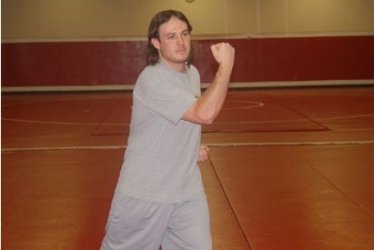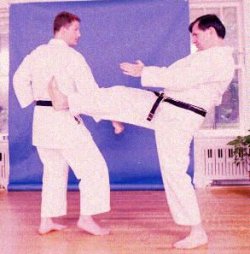I keep hearing that the real blocking hand is the one that is being chambered and lowered to the side. How is that so? During the entire sequence of the block its nowhere near the attacking limb to be blocked. I would love some clairification on this.
Secondly if its sLossed to be grabbing something why is it chambered so low? Looking at the movements I do not see any opening for a throw. Even if there is the other hand still has to deal with defending is deflecting the incoming attack.
If there not deflections why are they still called uke(ru) or to receive? If their purpose is not to defend why keep them in the art under a name that suggests deflecting/defending? Why keep them at all
Their are more efficient ways to uppercut someone then with the rising block. Certainly better ways to attack the lower body then with the lower block.
Why didn't the founders of your arts leave detailed writings about the proper usages of these apparently controversial blocks/deflections. To pick on boxing their are books and manuals going back along time detailing moves and defenses.
Look at pre-1867 bare knuckle boxing. They had blocks and deflections that according to the pictures in the manuals looked a lot like the TMA deflections and were intact used as such.
Secondly if its sLossed to be grabbing something why is it chambered so low? Looking at the movements I do not see any opening for a throw. Even if there is the other hand still has to deal with defending is deflecting the incoming attack.
If there not deflections why are they still called uke(ru) or to receive? If their purpose is not to defend why keep them in the art under a name that suggests deflecting/defending? Why keep them at all
Their are more efficient ways to uppercut someone then with the rising block. Certainly better ways to attack the lower body then with the lower block.
Why didn't the founders of your arts leave detailed writings about the proper usages of these apparently controversial blocks/deflections. To pick on boxing their are books and manuals going back along time detailing moves and defenses.
Look at pre-1867 bare knuckle boxing. They had blocks and deflections that according to the pictures in the manuals looked a lot like the TMA deflections and were intact used as such.


